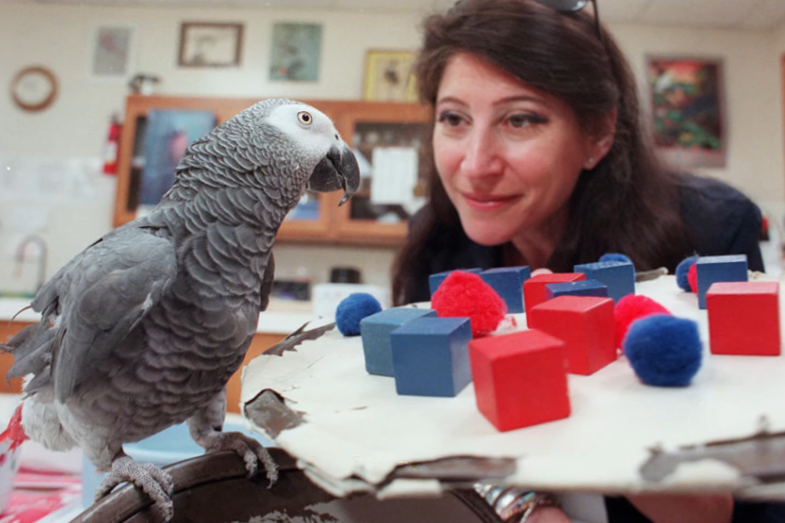
Birds are often seen as beautiful, harmless companions—chirping from their cages or mimicking a few cute words. But some birds? They’re way too smart for comfort. These feathered geniuses didn’t just learn tricks—they learned people. They watched, remembered, and, in some cases, outwitted the very humans who fed and loved them. Their actions were so unsettling, emotional, or downright eerie that they left owners speechless—and the internet in awe. These aren’t just bird stories. They’re unforgettable tales of loyalty, loss, manipulation, and memory. Let see explore them in the next slide
Alex the African Grey Parrot

Alex, an African Grey Parrot, was the star of a 30-year research project led by animal psychologist Dr. Irene Pepperberg. He wasn’t just repeating words—he understood concepts like numbers, colors, and even the idea of zero. Alex could distinguish between objects and respond to questions with accuracy comparable to a young child. What shocked the world were his final recorded words to Dr. Pepperberg before his sudden death: “You be good. I love you. See you tomorrow.” His intelligence was widely recognized by the scientific community, and he became a symbol of avian cognitive brilliance.
Betty the New Caledonian Crow

Betty, a New Caledonian crow studied at Oxford University, stunned researchers by creating tools without being taught. During an experiment, she was given a straight wire and needed to retrieve food from a vertical tube. Without hesitation, Betty bent the wire into a hook and used it to fish out the treat. This level of innovation, problem-solving, and foresight was considered groundbreaking—especially because she did it without ever having seen tool-making before. Betty’s actions challenged the notion that such complex behavior was exclusive to primates and humans.
Snowball the Cockatoo

Snowball, an Eleonora cockatoo, became the first non-human animal proven to dance in rhythm with music. He didn’t just bob randomly—he adjusted his moves to match different beats and tempos. Researchers studying Snowball confirmed that his ability to synchronize to music was intentional and rhythmic, a trait once thought to be exclusive to humans. Snowball’s love for pop songs and expressive dancing opened a new door in the study of animal behavior and auditory-motor synchronization. His case became an internet sensation and a subject of serious academic study.
Griffin the African Grey Parrot

Griffin, another African Grey Parrot studied by Dr. Irene Pepperberg, made headlines when he beat 3- to 5-year-old children in logic-based tasks. In one particular study, Griffin correctly identified where food was hidden using auditory cues, while many of the children struggled. This showed he could perform inferential reasoning, a complex cognitive skill. Griffin’s case wasn’t just adorable—it was profound. He proved that parrots could think logically, make deductions, and perform on par with human children in specific intelligence tests.
Goffin’s Cockatoos

Goffin’s cockatoos have exhibited remarkable problem-solving skills in various studies. One notable example is a cockatoo named Figaro, who was observed crafting tools from wooden splinters to retrieve out-of-reach food. In another experiment, these cockatoos successfully navigated a complex five-step lock mechanism to access a treat, showcasing their ability to understand sequential tasks and manipulate objects purposefully.


